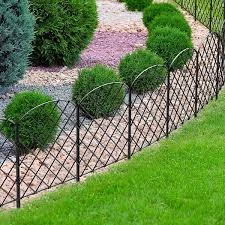The Cost of Barbed Wire Fence per Acre A Comprehensive Overview
Barbed wire fencing has long been a staple in agricultural and rural areas, offering farmers and landowners an effective solution for enclosing pastures, securing property, and managing livestock. Understanding the cost of installing barbed wire fencing per acre is essential for anyone considering this investment. This article delves into the various factors influencing the cost, providing a detailed breakdown for prospective buyers.
Understanding Barbed Wire Fencing
Barbed wire fencing consists of two or more strands of wire twisted together with barbs spaced evenly along the length. These barbs serve as a deterrent, preventing animals and unauthorized individuals from crossing the boundary, thus protecting crops and livestock. While there are various types of fencing materials available, barbed wire remains one of the most cost-effective options.
Cost Breakdown
The cost of installing barbed wire fencing per acre can vary significantly based on several factors, including
1. Materials The quality and type of barbed wire selected play a crucial role in overall costs. Standard galvanized steel wire tends to be the most affordable, while heavier-duty options, such as high-tensile wire, offer greater durability at a higher price. On average, the cost of barbed wire ranges from $0.10 to $0.50 per linear foot.
2. Posts The type of posts you choose can also impact your total cost. Wooden posts are generally the cheapest option, costing approximately $3 to $6 each. On the other hand, metal or fiberglass posts can range from $5 to $15 each. For an acre, you typically need about 4 to 8 posts for every 100 feet of fencing, depending on the layout and terrain.
cost of barbed wire fence per acre

3. Labor If you choose to hire professionals for the installation, labor costs can significantly increase your expenses. The average labor cost for installing fencing ranges from $0.50 to $1.50 per foot. If you're handy and choose to do it yourself, you can save on these costs, but you’ll need to invest time and effort.
4. Terrain and Accessibility The type of terrain and its accessibility can affect installation costs. Uneven or rocky terrain may require additional labor or equipment to prepare the land, driving costs higher. Conversely, flat and easily accessible land will be cheaper and quicker to work with.
5. Gates and Accessories If you need to integrate gates or other accessories into your fence, this will add to your overall costs. A standard gate can range from $100 to $500 depending on the width and material.
Estimating the Total Cost
To provide a rough estimate, let’s consider the costs involved in constructing a barbed wire fence around one acre (equivalent to approximately 836 linear feet). Assuming the use of standard galvanized wire and wooden posts, here’s a basic breakdown
- Barbed Wire 836 feet x $0.20/foot = $167.20 - Posts Assuming 8 posts per 100 feet, you will need about 67 posts 67 posts x $4/post = $268 - Labor Assuming DIY installation, you could forgo this cost. If hiring professionals, labor could add another $418 (836 feet x $0.50/foot). Thus, the total cost for materials alone would be approximately $435.20. If you include labor, the cost could rise to around $853.20. However, this is a general estimation, and actual costs may vary.
Conclusion
Investing in barbed wire fencing can be a cost-effective solution for property protection and livestock management. By understanding the components that contribute to the cost per acre, landowners can make informed decisions that align with their budgets and needs. Whether you opt for DIY installation or hire professionals, knowing the factors that influence pricing can help you achieve a secure and functional fencing solution. As with any investment, thorough research and planning are key to ensuring the best possible outcome for your fencing project.
















